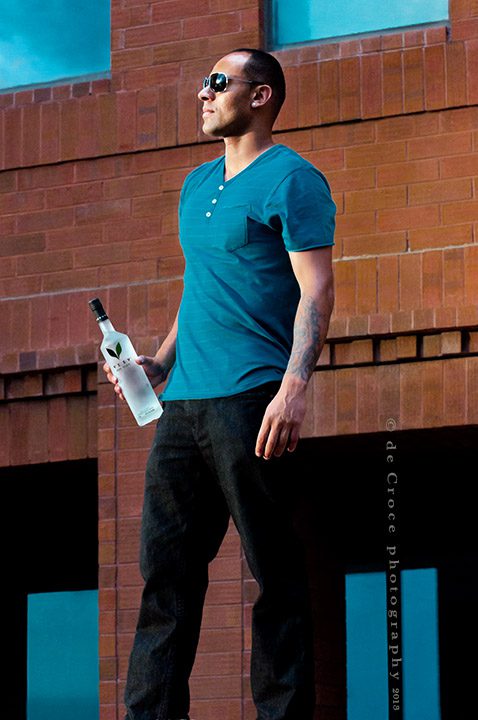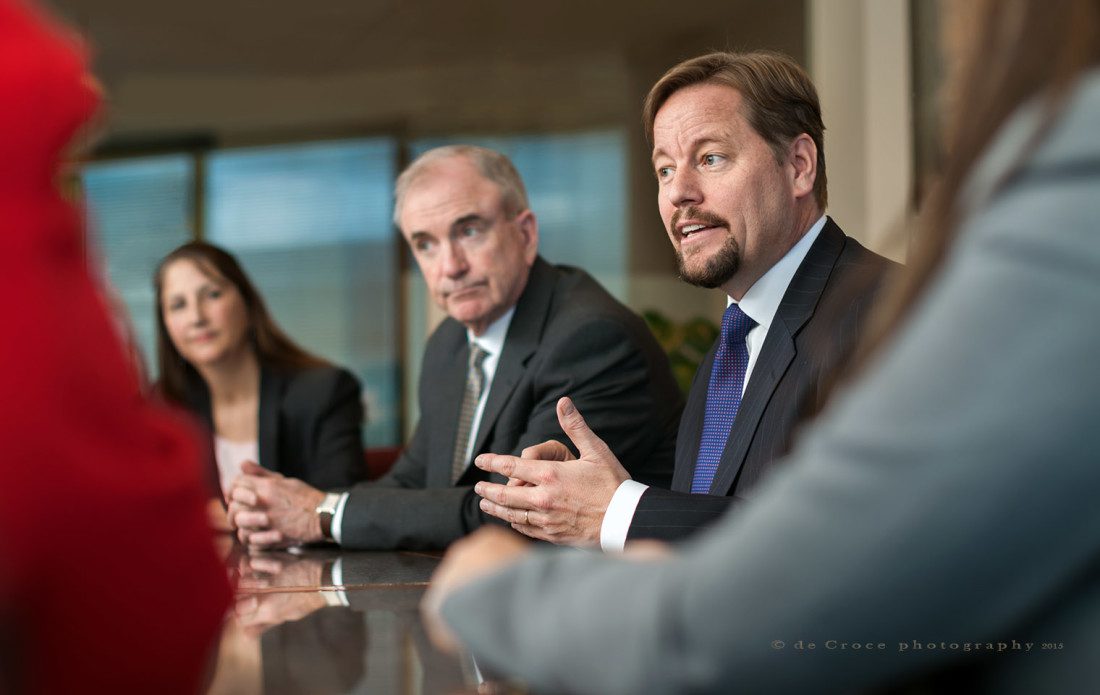by Edward DeCroce
Advertising Photographers – Commercial Photographers
A subtle Difference
.
Denver commercial photographers and advertising photographers really do rock.
Just a quick look through the internet reveals an incredibly vast number of well-crafted advertising and
commercial images created in Colorado. Ad agencies and marketing firms have no trouble finding capable talent behind the lens.
But what is a commercial photographer? And what separates commercial photographers from
advertising photographers or photojournalists?
To answer these questions, it’s helpful to understand what connects them. Three categories of professional photographer
who do work for corporates and entities other than individuals are photojournalists, commercial photographers
and advertising photographers. Other photographers, like portrait and evert photographers, are retained by individuals.
Fine-art photographers could be commissioned by a corporation. But more commonly, fine-art photographers undertake projects
that inspire them alone. A fine artist’s intent is to deliver a message through their work that is unique to their own perspective.
They work alone with the hope of selling their work at a later time typically through a physical or cyber gallery.
.
Of course, there are a jillion subsections of photographer types – too many to mention them all here.
Industrial photographers, energy photographers, food photographers and interior/architectural photographers are all
kinds of commercial photographers. Their work is done for a larger entity like a business, corporation or publication.
A concert photographer could be a young photographer who hasn’t yet figured out how to make a living in the photo-world.
Or they could have a gig with Rolling Stone.
.
A professional photographer who photographs family portraits, pets, or private events for a living is typically not a
commercial photographer – at least not exclusively. This photographer is classified as a portrait photographer or an event photographer.
Depending on the assignment, an equine photographer who shoots for
“Horse Illustrated” magazine could be a photojournalist or they might be a commercial photographer.
They could even be a moonlighting jockey.
.

Captured for the city of Louisville, this image is one of my most popular commercial shots. Helicopter pilot Ben Porter, warned me not to “drop” anything out of the doorless helicopter so I harnessed two camera bodies close to my chest. One lens, a (25mm – 80mm zoom) was used for the aerial shots of the ground below. The other lens (a 10.5mm) was for me to capture the pilot in flight.
.
.
Fashion photographers and travel photographers probably deserve their own classification, especially when they
have a full-time gig with a magazine. Not unlike concert photography and street photography, these subjects might be taken on
by photographers looking to add to their own portfolio.
.
Stock photographers and aerial photographers have gone the way of
Polaroid and
Kodachrome – mostly.
Not long ago, an energetic photographer could make hay with pictures sold through stock. Every major city had at least one thriving
stock house where enterprising photographers sold transparencies. Per-image rates were adequate enough, that
hard working photographers could perpetuate their passion. They labeled themselves as “stock-photographers”.
Stock houses do exist today in the digital world. But low per-image rates and the abundance of instant on-line material,
paint a daunting horizon for the would-be stock photographer. Aerial photographers are being displaced by drones.
As recently as 2013, images (like the one posted here of a helicopter pilot) were commissioned to capable photographers who
specialized in aerial pictures. But cut-rate fees by drone operators lure potential aerial clients. As the resolution quality of
drone photography improves, traditional aerial photographers are left out.
.

Commercial photography for airport service firm G2-Secure. ….It was loud.
.
Commercial photography then, is the big umbrella category under which Advertising photography resides.
Few photographers follow a straight-arrow-career-path without dabbling in the myriad of other photography types. But more than
most others, commercial photographers and adverting advertising photographers tend to typecast themselves.
.
Size of budget and time of preparation are two distinguishing differences between commercial photography and advertising.
An ad-agency hopes to contract an advertising photographer far in advance of actual production shooting.
Whereas commercial photography projects tend to be more immediate. Its not uncommon for a commercial
photographer to be contacted a week before potential photo-shoot.
.
Commercial photographers commissioned by mid size firms are often contacted by a marketing strategist who
doubles as the art director. Photo-shoots can be as short as 1/2 day for something like a CEO portrait. Or they might span a week of
continual shooting. Commercial photography projects that involve field photography, executive portraits and
reportage-style business photojournalism might require six or seven days to complete.
.
Images captured in a commercial photo-shoot are used by the firm who retained the photographer to promote their own
product or service. Pricing for commercial photography engagements depends on usage. Images created for
publicity or internal-collateral-use command a smaller rate than those meant for external-collateral-usage or advertising use.
.
Publicity pictures are the kind that will be sent out in press packets to newspapers, magazines and on-line publications.
Internal-collateral-use images are used in in-house publications produced by the client who hired the photographer.
Brochures and newsletters created for employees are internal-collateral use.
External-collateral-use photographs are used in publications seen by the general public. Annual reports and
websites fall under this category.
Advertising-use imagery is that which will be used in publications not produced by the client – like magazines and websites.
.
All of this leaves out medical and legal photographers. But, some types of photographers should remain uncategorized, right?

This cute 1st grader was captured as part of an advertising photography project for the Denver International School for languages by Denver commercial photographers from DeCroce.
Denver commercial photographers
Denver commercial photographers
Advertising photographers typically work with bigger budgets than do commercial photographers.
And they work closely with an art director including a team of creatives and gofers. Along with fine-art
photographers who create their own purpose, advertising photographers are considered to be
among the most accomplished. Much of their work is done is studio.
With bigger budgets and more time, a photographer creating images for an advertising
campaign implements ideas that are preconceived.
.
One of the biggest differences between advertising photography and commercial photography is humor.
It’s not that commercial photographers don’t like to evoke humor with their pictures.
One series of pictures I’ve been working on is “The Shirtless Executive”. These are normal
executives, male and female, who happen to be wearing no shirt under their suits.
The results seem humorous because the images challenge the stereotypical hackneyed nature of
executive portraits. Obtaining releases, however has not been easy.
.
Advertising photography projects, on the other hand, target humorous ideas from the outset. And the ad agencies have the
funds to pay models. While firms hiring commercial photographers typically have have exact expectations, advertising
photographers are encouraged to focus on mood, spirit and concept.

Advertising photography of Veev Spirits was captured in Denver. Late day light and reflectors accentuated cool blue tones of the model’s shirt and the glass windows.
.
.
“A joke is a very serious thing,” Sir Winston Churchill is quoted as saying.
For humor to be effective in advertising, producers trust that viewers possess a knowledge base sufficient enough to
connect the dots. The “
Big Ad” television commercial for
Carlton Draught pale lager is a perfect example.
Referencing historic Hollywood battle scenes like
Braveheart, “Big Ad” producers, link dramatic visual footage with
intended it, The Big Ad conjures recollections of the scene “An Honest Prayer” from The Meaning of Life. The 1983
.
Advertising photographers are magicians at communicating humor in a still image. And sometimes, a big part of the magic relies on
post-production art and manipulation (what we used to call “retouching”). Below are two groups of ads. What separates the two sets is
the amount of post-production used. At what point does a photograph become an illustration?

In this group of humorous ads (not made by us) we see simple concepts made with little or no post-production retouching.

This selection of humor images by top national advertising photographers (not created by us) are photo-illustrations.
´´´´´´´´´´´´´´´´´´´´´´´´´´´´´´´´´´´´´´´´´´´´´´´´´´´´´´´´´´´´´´´´´´´´´´´´´´´´´´´´´´´´´´´´
.
Photojournalists capture real-life events. Opposite from a advertising photo-illustrator, a photojournalist’s aim is purity.
They endeavor to tell an honest story with pictures. Changing real-life events to sell a picture or manipulating captured exposures
is taboo to professional or aspiring photojournalists.
Photojournalism is included in this discussion because commercial photographers sometimes incorporate the same techniques as
would a photojournalist. Commercial photographers cover corporate meetings and other discussions as a photojournalist in order to
create imagery that will showcase a client’s product or service in a realistic way.

Early photojournalism depicted dead soldiers during the American Civil War.
.
A Glance at the History of Photojournalism.
Some of the first photojournalists were those who captured gruesome aftermath scenes
of battle during the American Civil War (1861-1865). And with these images, public
perception of the nature of war was forever altered.
With the invention of the first 35mm (Leica) camera in 1925, photo-storytellers had a new
powerful tool to stealthily record images. World events during WWII and after were
delivered to living rooms and offices through magazines like
Life and
Der Spiegel.
Wikipedia writes that the golden age of photojournalism is in decline. “The Golden Age of
Photojournalism ended in the 1970s when many photo-magazines ceased publication.
They found that they could not compete with other media for advertising revenue
to sustain their large circulations and high costs.”
.
In todays world, we rely on video productions to stay current with world events.
We “watch the news’ on a myriad of news television channels. And we’ve become accustomed to moving photojournalism.
Videographers who cover news events are every bit as much a photojournalist as their traditional still-camera counterparts.
Broadcast journalism brings to life events in places that the viewer will never go – and with sound.
But the strengths of a single image to tell a story will always exist. A silent slice of time captured in a fraction of a second can forever
freeze events and expressions. A single frame image allows the viewer’s mind to go inside the moment. It evokes emotion.

Iconic examples of top photojournalism have been well viewed over the years. The crowd picture is from Woodstock – 1969

These famous representations from great photojournalists were obviously not done by us.

Commercial photographers hired to update a corporate library of professional images use photojournalism to tell a story.











What a lot of thought you put into this! When asked what I do for a living, I will never again just say, “I’m a photographer”.
[…] photography in Denver was part of the conversation in “Denver Commercial Photographers Rock” ( April 2016 […]